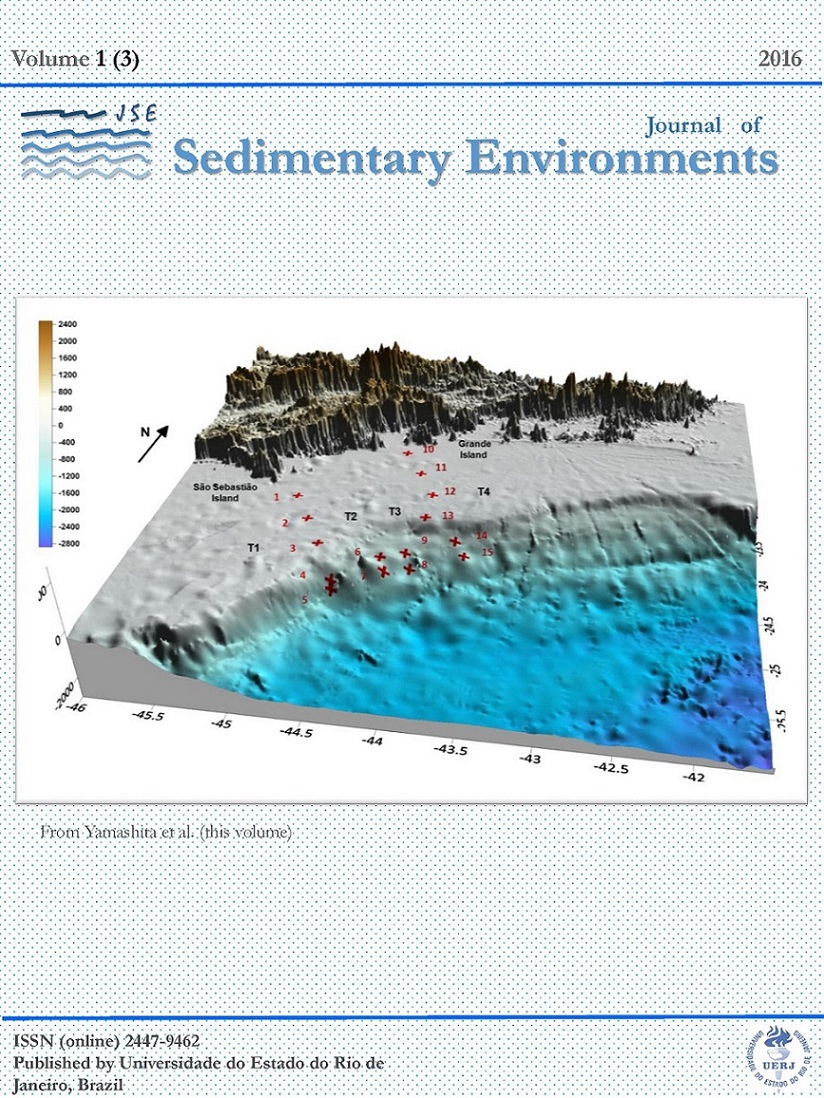DEPOSITIONAL ENVIRONMENTS OF SUPRACRUSTAL METASEDIMENTARY SEQUENCE AND POSSIBLE MODEL FOR ZINC MINERALIZATION OF RIO CLARO AREA, RIO DE JANEIRO STATE (BRAZIL)
DOI:
https://doi.org/10.12957/jse.2016.26016Keywords:
limestone quartzite, Zn-Ag mineralization, SEDEXAbstract
This work focuses on Neoproterozoic supracrustal rocks related to Andrelandia megasequence, which are superimposed on the basis represented by neoarchean granulites and palaeoproterozoic ortogneiss, in order to define palaeoenvironments of deposition of metasedimentary rocks and typological model of zinc mineralization of Rio Claro, Rio de Janeiro State, SE of Brazil. Three stratigraphic units in the area were considered for the studies: Valadão, São Roque and Lidice. Valadão unit was divided into three subunits: psamitic, psamitic / pelitic and pelitic. On the whole, it represents a turbiditic sequence influenced by underwater hydrothermal exhalations that led to the formation of quartzite with magnetite, considered as banded iron formations. São Roque Unit is composed of four subunits (São Roque I, II, III and IV) and presents a typical pattern of deposition of low energy environments, in marine deep basins. Gondite, coticules levels and (Mn)-almandine present in the local gneiss mark the manganese exalative contribution in that unit. Lídice unit has different sedimentation palaeoenvironments and is subdivided into Lídice I, II and III. Lídice subunits I and II exhibit quartzite interleaved with pelitic rocks and graphite gneiss, suggesting deposition in deeper environments of the basin, probably related to turbidity currents. In Lídice III subunit, more carbonated and with more quartz, limestone quartzite stand out, which enclose mineralized zones, reflecting depositional environment in shallow platform, possibly involving evaporitic environment, sabkha type. Sulfite mineralization of Rio Claro, associated with platformal rocks intensely metamorphosed and deformed, as well as its local geological context, features similarities with sedimentary exhalative deposits (SEDEX) Zn-Pb-Ag model, Shuswap and Monashee type, present in Monashee and Shuswap Complexes of British Columbia in Canada.
Downloads
Published
Issue
Section
License

Journal of Sedimentary Environments (JSE) is licensed under a Creative Commons Attribution-Noncommercial-Share Alike 4.0 International License.

